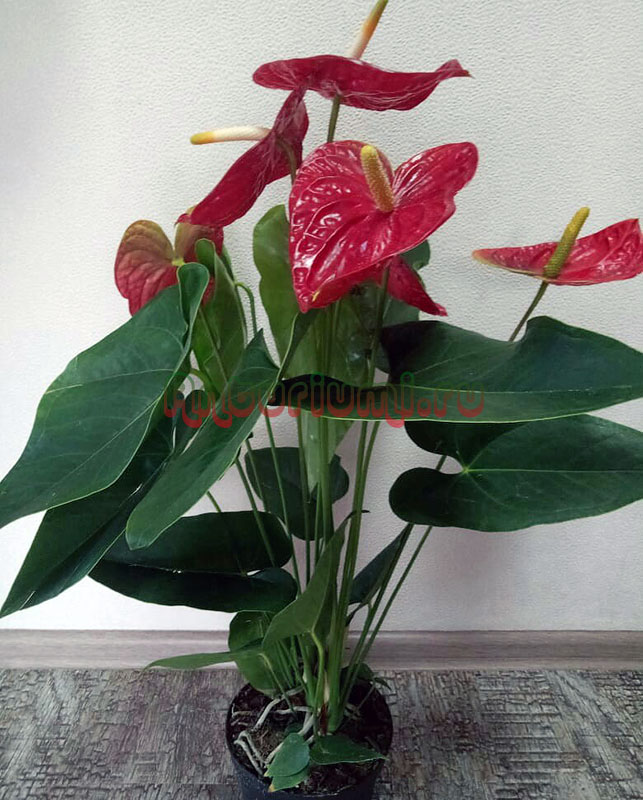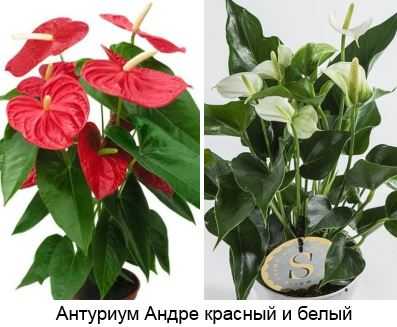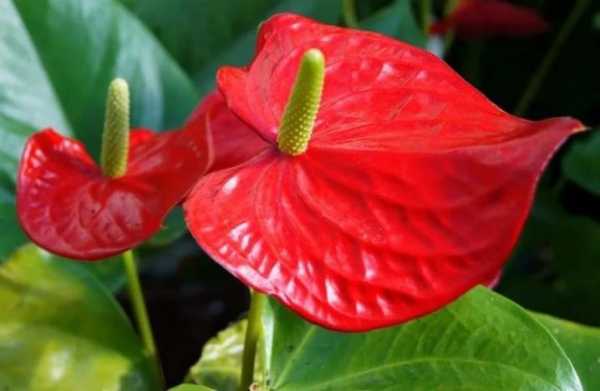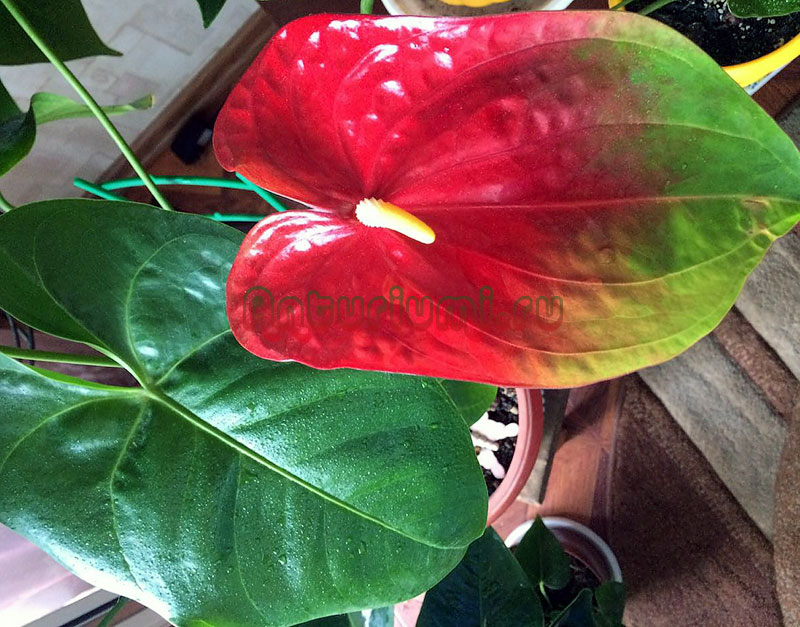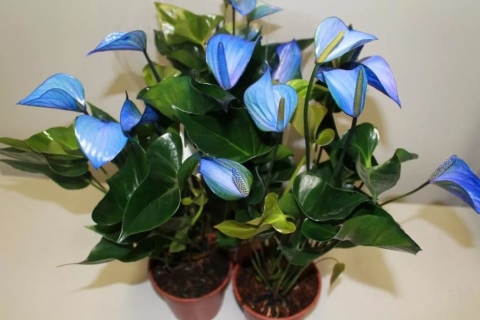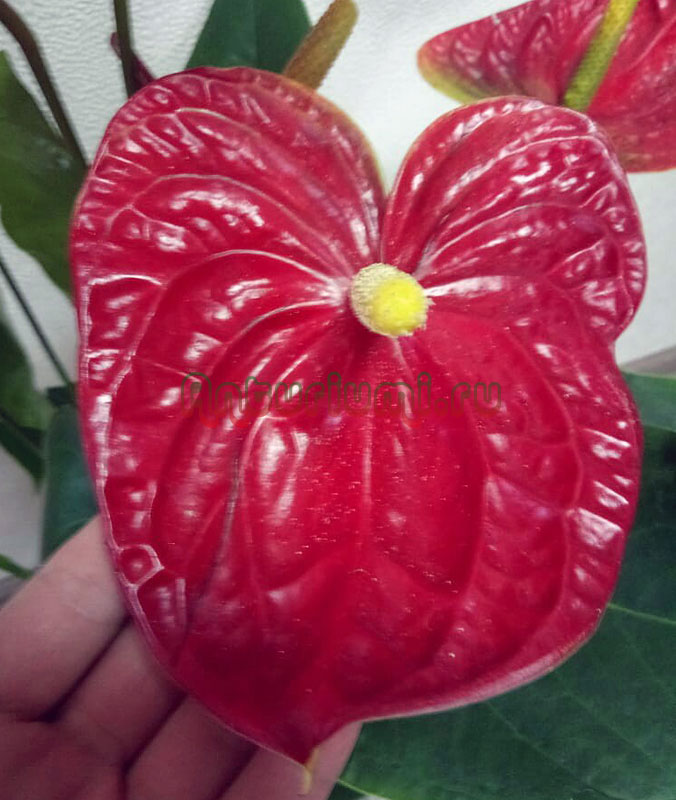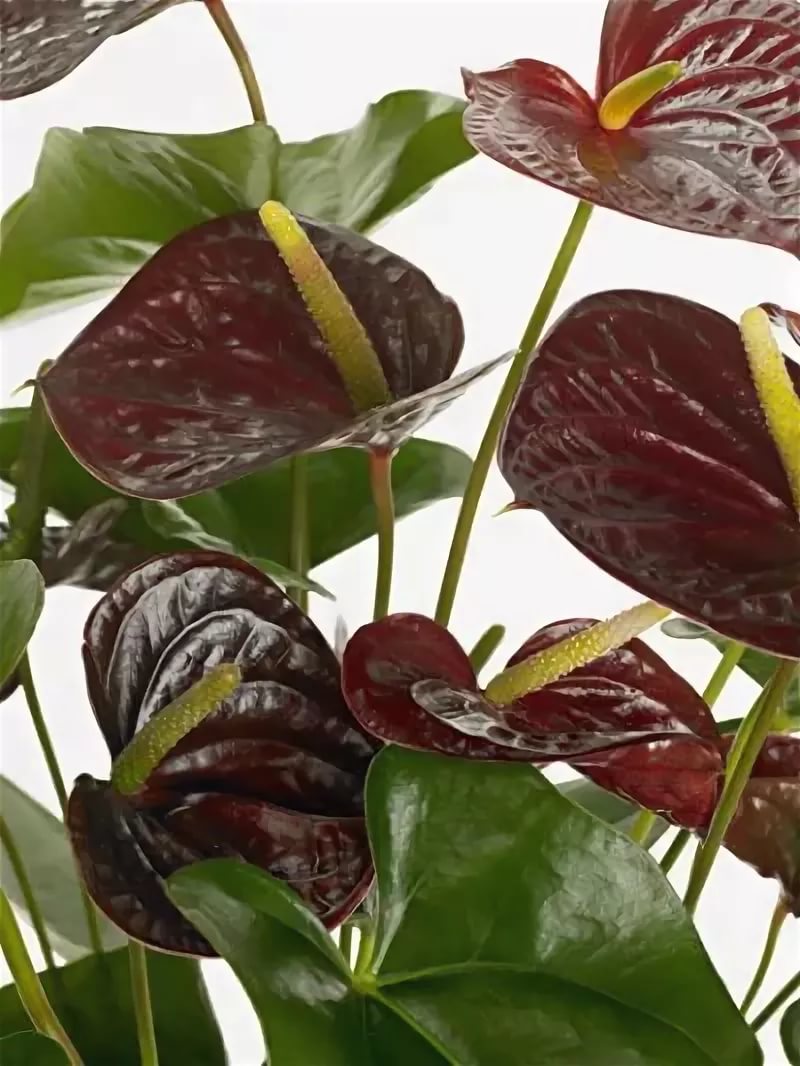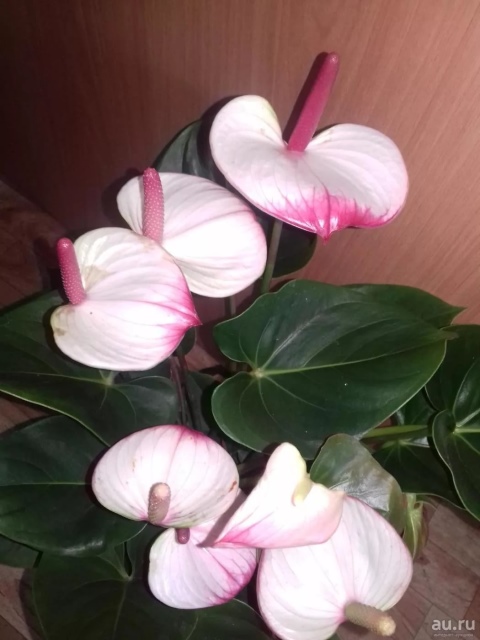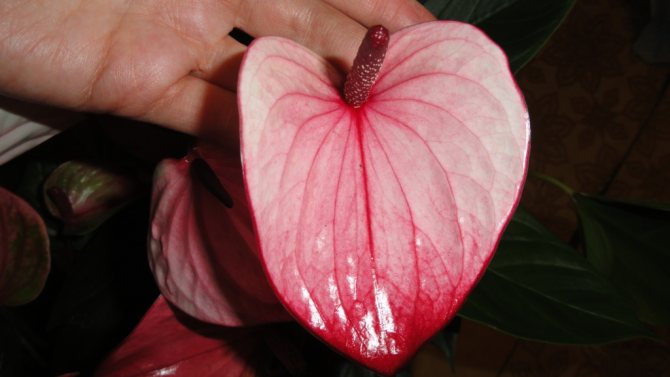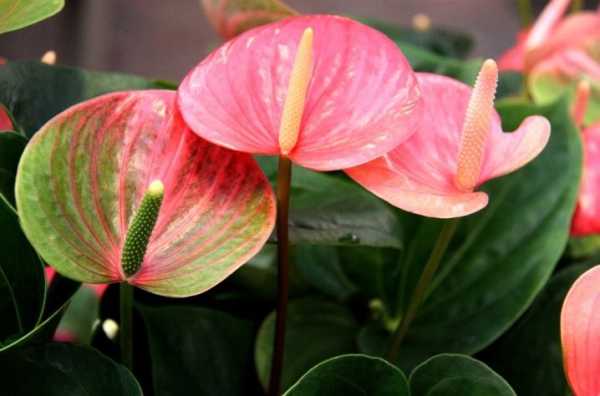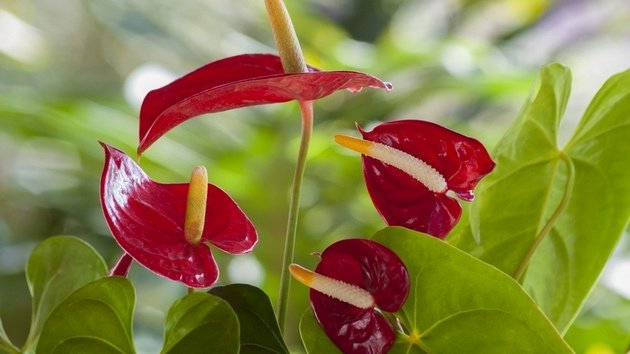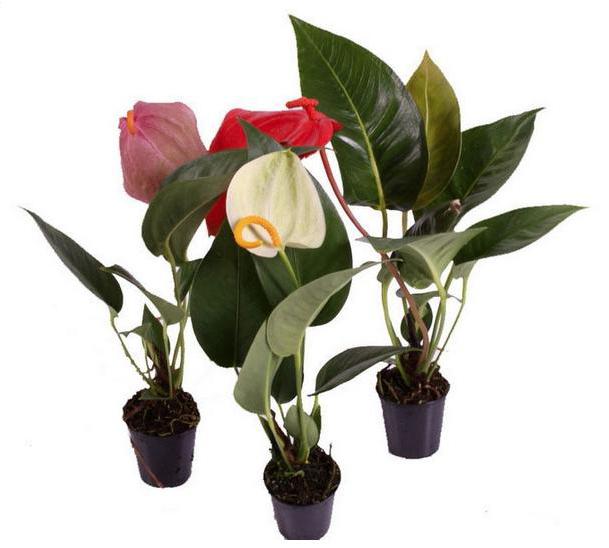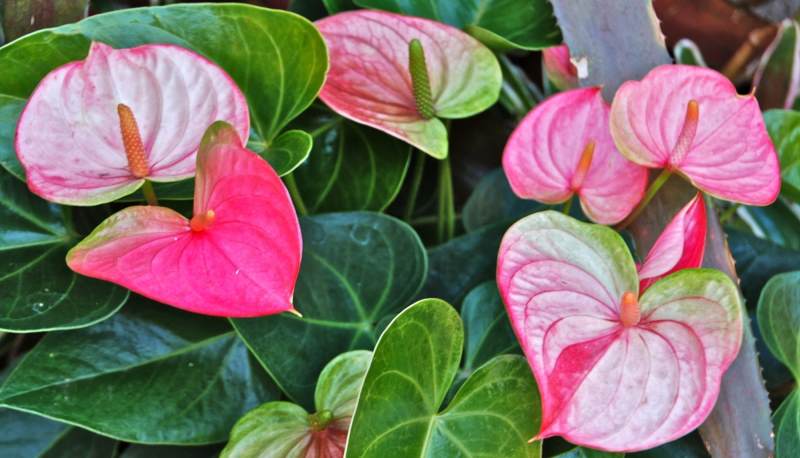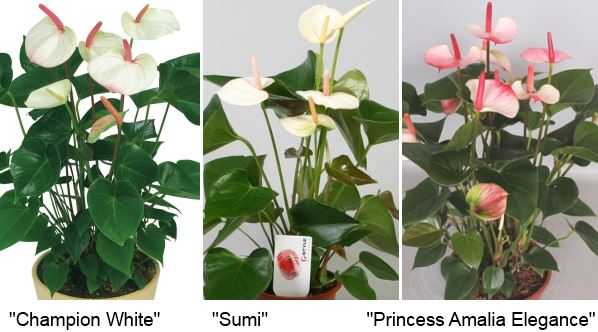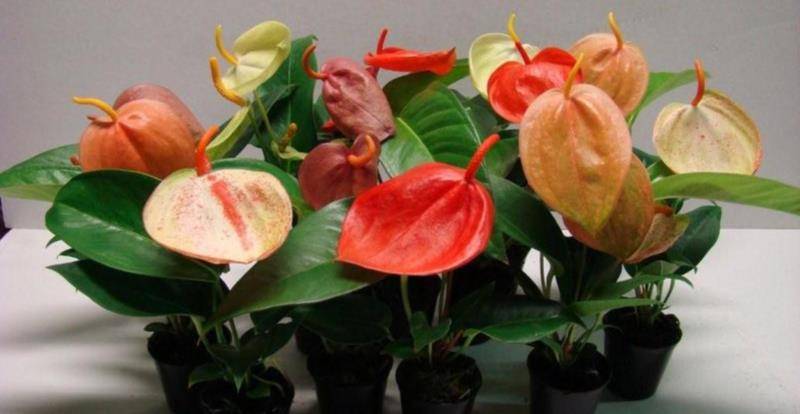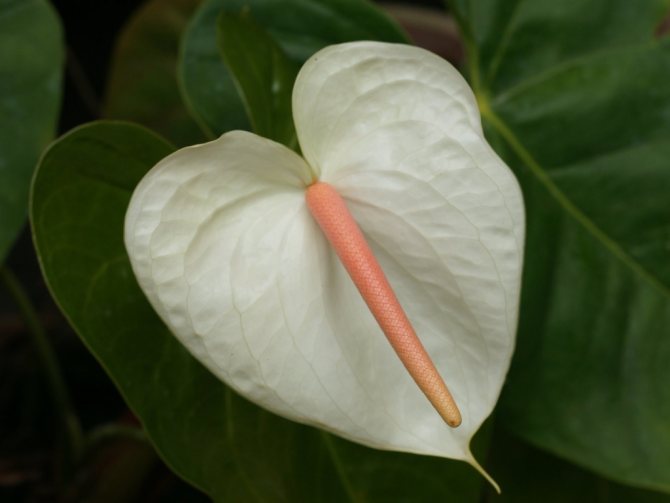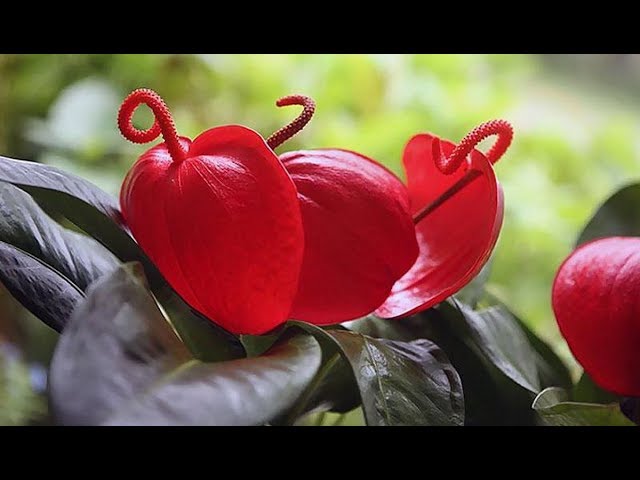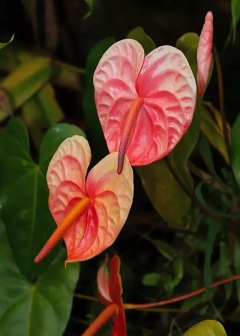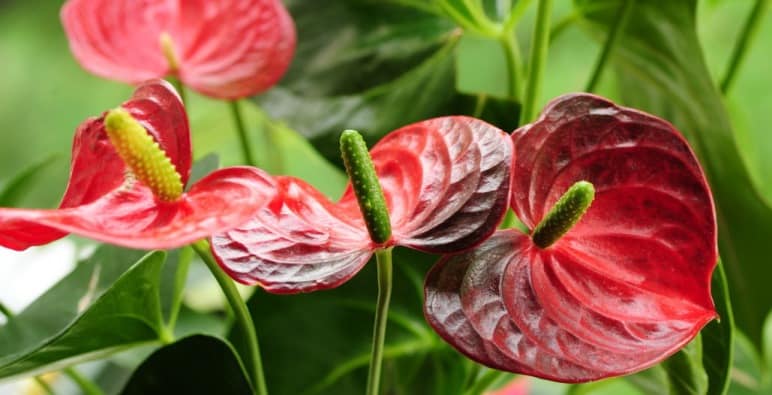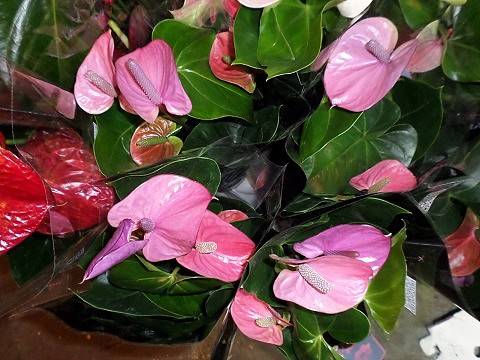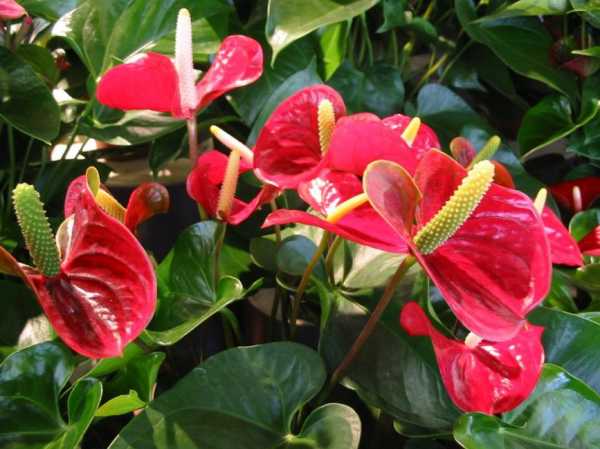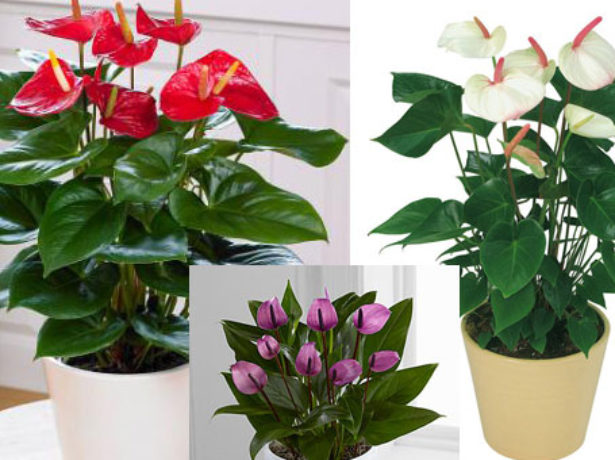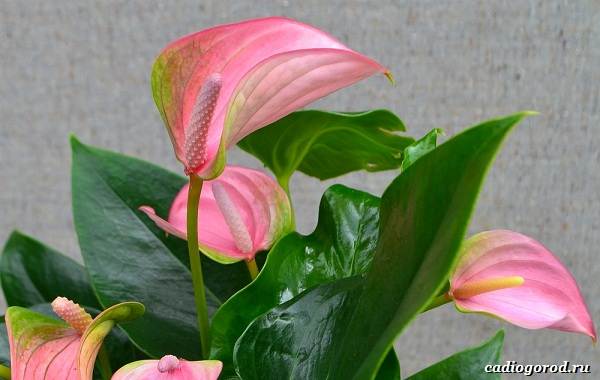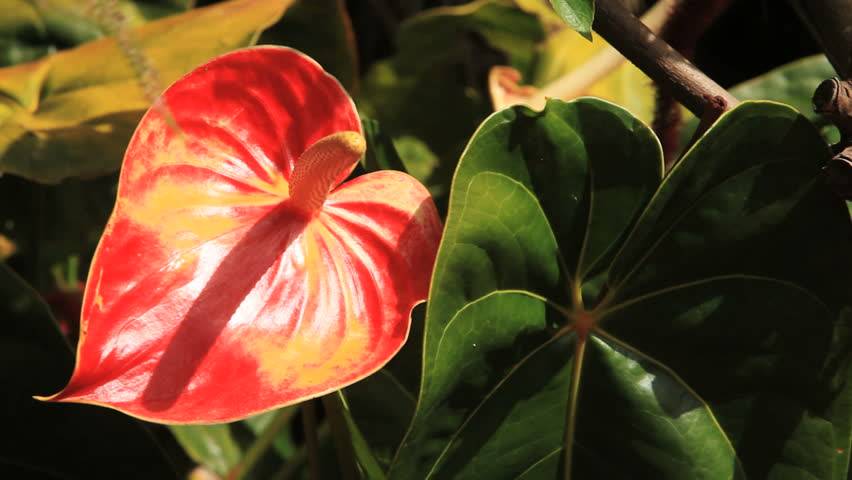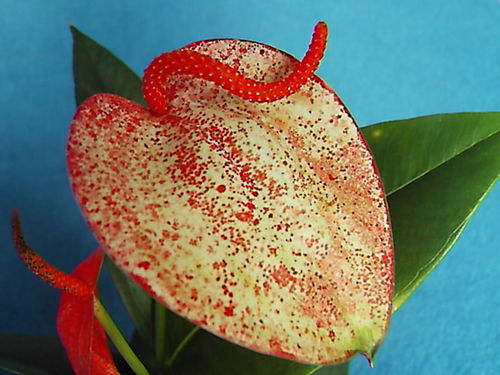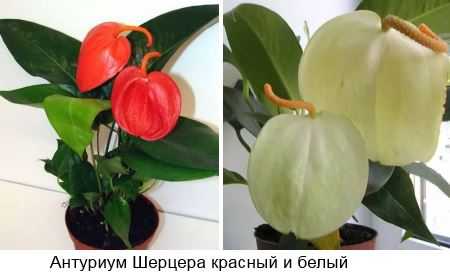How to take care at home?
Temperature
Anthurium is a thermophilic plant. The optimum temperature for it is 20-27 ° C. At the end of summer, the temperature is gradually lowered, and in winter the flower is kept at 16-17 ° C. The temperature should not fall below 15 ° C.
Watering
Anthurium, a native of tropical rain forests, loves moisture very much, but does not tolerate liquid stagnation. In the summer it is watered about twice a week; by winter, watering is gradually reduced to once a week. The basic rule is that before watering, you need to make sure that the topsoil in the pot is dry, but you must not allow the earth coma to completely dry out.
Tap water should settle and warm to room temperature; lime water soften before watering. After watering, drain the water from the pan.
Light
Since anthurium does not tolerate direct sunlight, it is advisable to place it on the east or west side. If the windowsill faces south, then the flower must be protected from the sun.
Priming
The basic rule is that the soil should be loose, well permeable to air and moisture. You also need to remember that the flower does not like acidic soil. You can buy ready-made soil mixture for orchids, or you can prepare the soil yourself. To do this, in equal proportions, combine leafy earth with peat.
You can also mix the bark with sphagnum, peat and charcoal and add some pine needles and brick chips. Good for anthurium and hydroponics.
Pruning
Pruning is done to thin a bush that is too dense, or to remove faded or white-spotted leaves. Small pruning shears or pruning shears work well for this. You need to start the procedure from above and perform it at an angle downward.
- Eliminate dry leaves and branches, discolored leaves.
- The plant is then sprayed with water from a spray bottle.
- Spraying is repeated until the wounds heal.
Top dressing
Anthurium is fed with liquid fertilizers for decorative flowering plants. The concentration of the solution should not exceed 20% of the dose indicated on the package.
You should not fertilize the plant more than once a month - the leaves will grow, but no buds are formed.
It is also advised to feed the flower with a freshly prepared Epsom salt solution every 3-4 months (1-2 tablespoons per 4.5 liters of water). From the end of August, feeding is reduced in order to completely stop them in the autumn-winter period.
Pot
You can't take too large a pot. Anthurium roots must reach its walls, otherwise they can rot. It is preferable to use a plastic pot rather than an earthen pot, as pottery tends to dry out the soil.
The pot should have large holes for drainage, as well as a support rim along the lower edge - this helps air access to the roots. The use of pots is not allowed.
Transfer
In the first years of the anthurium's life, annual transplants are required, then they are performed when the plant becomes cramped in the pot. Immediately after purchase the flower cannot be transplanted - it must get used to the new conditions.
Place a drainage layer on the bottom of the new pot. Usually, expanded clay is used for this, on top of which coconut fiber or sphagnum is laid
The main soil layer is poured on top of the drainage.
The plant is removed from the old pot, the roots are carefully cleaned from the soil, washed under running water.
If there is no rot on the roots, then the flower is transplanted into a new pot.
A layer of sphagnum can be laid on the surface of the soil.
Wintering
In winter, anthurium is not fertilized, kept at a cool temperature (but not lower than 15 ° C!), Watered no more than once a week.
Reproduction
- By dividing the bush.The transplant is performed as described above, a large bush is divided into several small ones. They are seated in separate containers.
- Seeds. A laborious process that does not guarantee the preservation of varietal traits. When juicy berries ripen, seeds are extracted from them, disinfected in a solution of potassium permanganate and laid out on the surface of the soil (leaf or peat).
During seed germination (8-15 days), they are kept at a temperature not lower than 22-24 ° C. One and a half month seedlings in the real leaf phase dive.
- Apical cuttings. Cuttings obtained from the top of the plant are planted directly in wet sand.
- Lateral shoots with aerial roots. Shoots are planted immediately in a pot.
Biological Dictionary
The Aroid family includes from 500 to 1500 species of artificially bred and natural anthuriums - this is the largest genus in this family.
Like many aroids, cavalli is an epiphyte, that is, it lives on other plants, but, unlike parasites, it does no harm to its "host", using it only for the purpose of obtaining light. This came from the ancestors of the flower, which grew in the southern regions of North America and almost throughout the Latin jungle.
A bushy plant, cavalli anthuriums and at home prefer a warm tropical climate, and with proper care, flowers appear quite often - up to 10-11 inflorescences in summer, and about 3-4 in winter.
Anthurium andrianum (Andre): home care
Anthurium Andre is considered the most accessible for growing of all its relatives. However, it should not be forgotten that this is a native of the tropical jungle, where high humidity throughout the year is the usual habitat of the flower. The same conditions must be strictly observed when keeping the plant indoors.
In addition, it must be remembered that all parts of the exotic representative of the flora are poisonous.
When caring for him, it is important to follow all safety precautions, use rubber gloves and wash your hands thoroughly. The green pet should be placed away from children and pets
Site selection and temperature conditions
Anthurium Andre prefers bright light, but it must be positioned so that direct sunlight does not fall on its leaves. For this, windows of any orientation are suitable, except for the south. When placing a plant on a windowsill, it is highly advisable to take care of its shading in the form of a translucent curtain.
The "flower-tail" loves warmth, but also favors the usual summer temperatures in our latitudes of 22 to 25 ° C. In winter, he does well at temperatures between 16 and 18 ° C. In addition, the coolness for one and a half to two months stimulates the laying of buds and flowering.
Watering and humidity
In the warm season, the plant should be watered abundantly, waiting for the top layer of the substrate to dry out - about twice every 7-8 days. With the onset of winter, watering is reduced to once a week. In this case, the excess water in the sump must be drained.
Anthurium Andre is very picky about water quality. Even soft, settled water is not good enough for him. It is recommended to boil it or acidify it with acetic or citric acid.
High humidity from 85 to 95% all year round is the most difficult wish of anthurium to fulfill. You have to use all possible ways to accomplish it. Spraying the plant daily in the morning and evening helps a lot. You can also place it on a tray with wet filler, and place containers of water next to it. The cardinal method is an air humidifier. The flower will not refuse to wipe the leaves with a damp cloth or sponge.
Anthurium is very fond of regular bathing in the shower.
Rinsing it with a strong jet from several sides allows you to additionally moisten aerial roots and foliage, wash off pests and dust.
Top dressing
During active growth, the "wax flower" is fed with complex fertilizers for flowering crops once every 14-15 days.
Bloom
Anthurium blooms from early spring to late autumn, especially in summer. Interestingly, after flowering, the veil turns green and becomes an ordinary leaf. From November to January, the plant rests and gains strength. As mentioned above, a cool wintering is very important for setting flower buds.
Soil composition and replanting
The soil for Andre anthurium, which is a semi-epiphyte and has numerous aerial roots, should be light and well aerated.
A ready-made mixture for orchids is quite suitable. But it's still better to prepare the substrate yourself. To do this, you need to take one part of vermiculite and coarse sand and two parts of crushed pine bark, peat, coniferous and leafy soil.
The mixture can be further improved with a little coconut fiber and small pieces of charcoal. Sphagnum moss is placed on top of the substrate.
Young anthuriums are transplanted every year, and adults - as the volume of the pot is filled with roots. A new container should be taken low and in plant size. In too large a flowerpot, you can not wait for flowering. The bottom of the container should be provided with large drainage holes and covered with a thick drainage layer. Extra holes in the walls of the pot will not interfere.
When transplanting, you should be very careful with the roots - they are very fragile. It is desirable that the base of the bush rises 5-6 cm above the ground
At the same time, the aerial roots are wrapped in sphagnum moss.
Transfer after purchase
It is undesirable to transplant the newly purchased anthurium immediately. The plant already has a hard time tolerating a change of place, and a change of substrate is additional stress.
You can only remove it from the pot and carefully, without disturbing the soil, examine the roots. If they are healthy, you can return the bush back to the container and place it in "quarantine" - separately from other flowers
The plant usually gets used to new conditions in a few weeks. After it adapts, you can transplant the "new settler" into a fresh substrate. In this case, it is advisable to wash the transport soil from the roots.
If a new "green friend" is acquired in a deplorable state, waterlogged and with decaying roots, an immediate transplant is required. Old soil should be washed out of the roots, and diseased roots removed.
Description
Anthurium is a plant that looks like a heart-shaped candle. The leaves are usually dark green in color and have a glossy or dull surface, depending on the variety. Anthurium belongs to the Aroid family, it is widespread in tropical South America, where this amazing plant was first noticed. Fitted greenhouses are perfect for him. Anthuriums get used to the conditions of the room with difficulty, but knowledgeable plant breeders manage to adapt them to the home atmosphere.
The plant got its name on the basis of external data and properties, because in translation from Latin it means "flowering tail". The people gave him the name "male happiness", and many are convinced that this plant protects a young family from adversity and adds good luck. If a married couple is given a flower, then the man needs to accept it, as the protector of the family. However, there is an opinion that blue anthurium is better suited for men.
Anthurium is especially attractive during its flowering, although this does not happen so often. In the case of flowering, the flowers can last for about a month, and sometimes even longer. In the common people, it is considered that the period of flowering of anthurium is a good omen.
Anthurium white color looks gentle and at the same time extravagant, and is in no way inferior to the attractive red color. The flower is unique in that it can stay fresh for about two weeks even if it is cut. The flowers are quite beautiful, they are able to look elegant and impressive even in the simplest bouquet, give joyful moments and cheer up.
If you believe the signs and superstitions, "male happiness" strengthens the health of men, and helps women to eliminate conflict situations in the family, and also brings financial wealth to the house.
What are the colors?
Long-lived inflorescences of anthuriums impress with a variety of colors that have absorbed all the brightness, richness and freshness of the colors of the tropical flora. In the first introduced specimens, the coverlet had a juicy bright red color.
Varieties with a red bracts have long become classics.
- Success ed. The variety with the “speaking” name “fiery tongue”, since the coverlet of its representatives is painted in a very catchy, causing a crimson-red color.
- Royal Champion. Form with a round, gracefully raised from the edges of the bedspread of a thick red hue and erect pink cob.
- Dynamite Red. The variety is interesting for its unusual and very refined curved shape of the bracts and a spectacular intense red color.
Anthuriums of pastel colors are in high demand in the world of floriculture. These are representatives of the peach and rosy blush varieties.
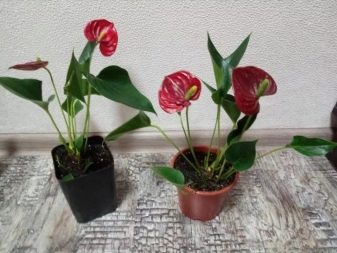

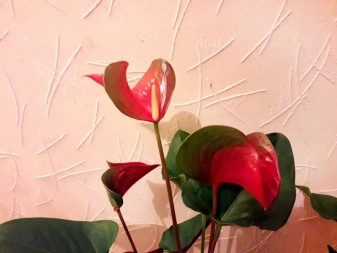
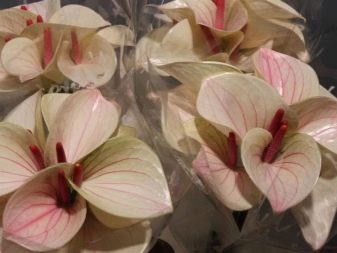
Of the pink varieties, several deserve special attention.
- "Princess Amalia Elegance". Plants with a bright pink veil in red veins and a uniformly colored pink cob. The tips of the bracts curl down beautifully.
- "California". Krupnomers with Extra Large flowers of dark pink or pinkish red color.
- Flamingo pink. A variety with a soft pink bedspread and a dark purple ear, this combination looks very elegant.
It is impossible not to mention the exquisite white varieties.
- Sumi. A hybrid with a round snow-white blanket, which changes color to pale green at the end of flowering.
- Adios White. Luxurious tall variety with a tulip-shaped snow-white veil and a bright yellow ear.
- Champion White. One of the best undersized hybrids of anthurium andrianum with an original slightly curled white veil in a slightly noticeable mesh of pinkish veins.
Orange varieties such as "Solara" with a bright orange-red blanket and yellow forms, the most famous of which is "Vanilla" with a delightful lemon blanket, enjoy no less success among florists.
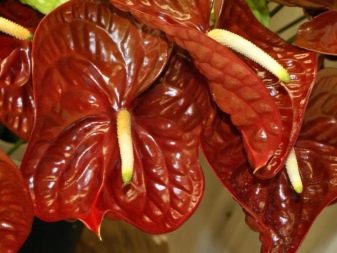

Purple anthuriums are very beautiful and spectacular.
- Fiorino. A variety in which the bracts are colored in a noble purple color with a lilac undertone.
- "Utah". The popularity of this garden hybrid was brought about by the mesmerizing purple-purple color of the bracts, which, in combination with an ear of a thick lilac shade, looks extremely impressive.
- Cavalli Purple. Large-sized form with a delightful pink-purple color of the bracts.
In the collection of anthuriums there are also many plants of luxurious dark colors.
"Otazu Brown"
Hybrids of this variety attract attention with a dark burgundy, almost chocolate color of the bracts.
Black Beauty. The darkest representative of the group of black varieties
Stylish, chic large size with a glossy bracts of thick chocolate color.
Black Queen. A popular hybrid that inherited and retained both colors from their parents. For this reason, when flowering on the bush, inflorescences are adjacent to a black and red blanket. The ears are pale green.
Interesting varieties with a bedspread in shades of green.
- Midori. In this variety, the flowers, when opened, immediately acquire a uniform pale green color.
- Green Queen. A variety in which the color of the plate during the entire flowering period changes from initially milky to deep red, and then pale green.
- Jaguar Green. A variety with a rare two-tone bedspread. Against the background of a bright lettuce bracts, pink veins are clearly visible, which looks incredibly impressive.
Anthuriums with a veil in shades of blue or blue do not exist in nature due to their lack of a gene for such pigments.However, there are varieties on the flower market with an amazing ultramarine color of the bracts. These are Princess Alexia and Picasso.
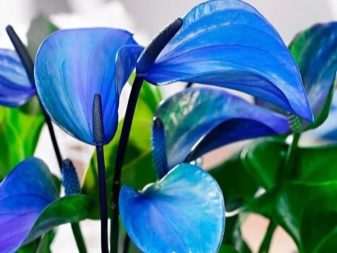
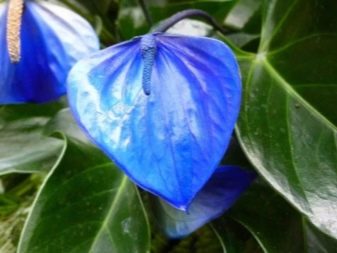
Necessary conditions for growing
To get a spectacular rose garden, you need to follow certain rules for caring for plants.
Location
Before planting whimsical plants, the following indicators should be considered:
delicate roses in the garden require good lighting throughout the day, while avoiding direct sunlight on them;
the correspondence of the climate to a specific plant variety matters, since this flower loves warmth;
you should not plant rose bushes in an area with constant drafts, but the presence of space is important.
Basic soil requirements
To obtain a beautiful rose bush, you need to take into account the characteristics of the soil:
- the soil is needed not too light and not heavy;
- clay soil leads to stagnation of moisture, as a result of which plants often get sick;
- nutrients are quickly washed out from light soil and water leaves, which requires abundant replenishment, which can also harm.
Note! Neutral soil is the best soil for a rose garden


